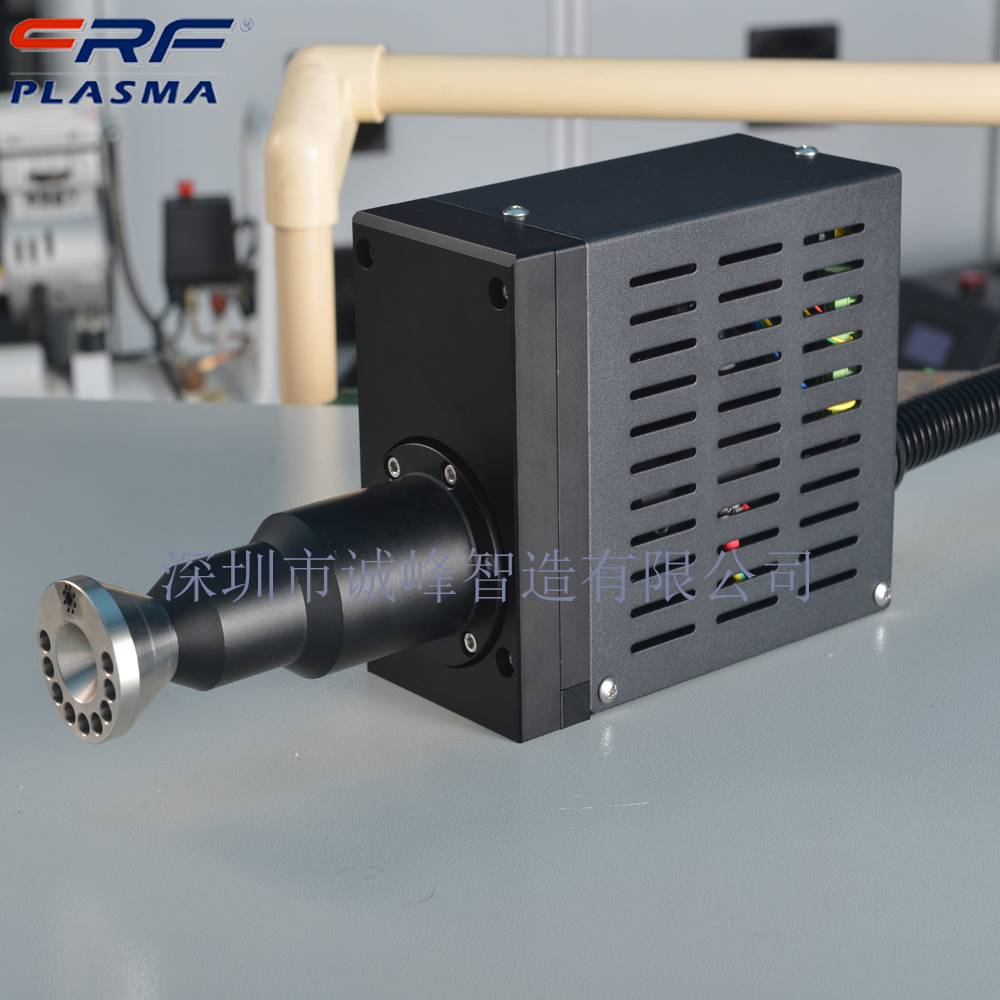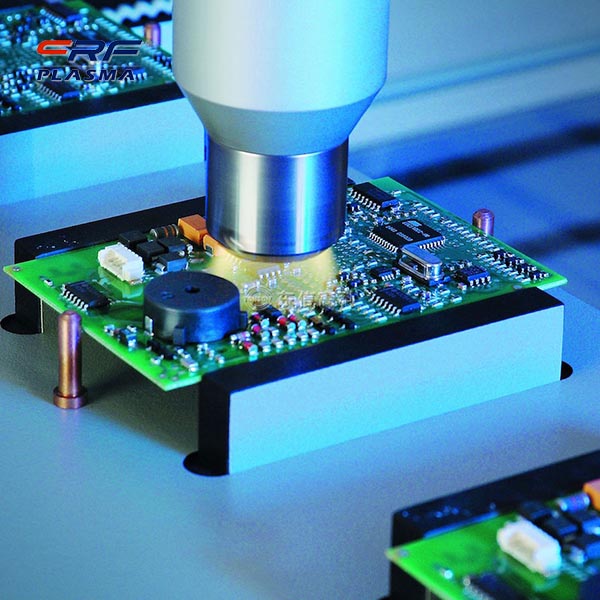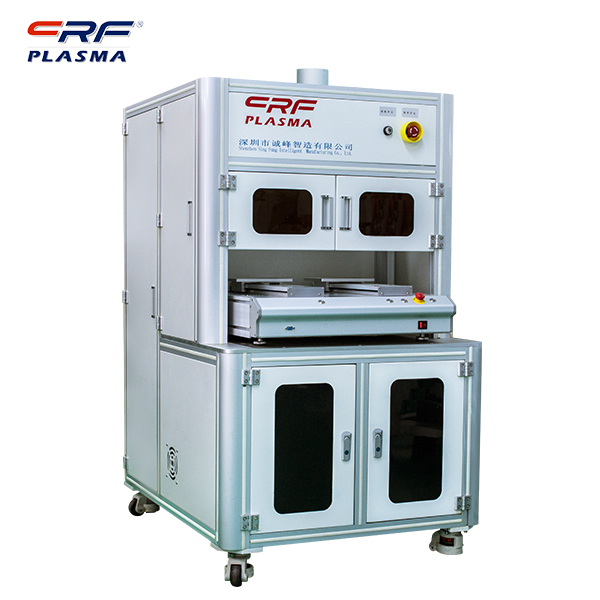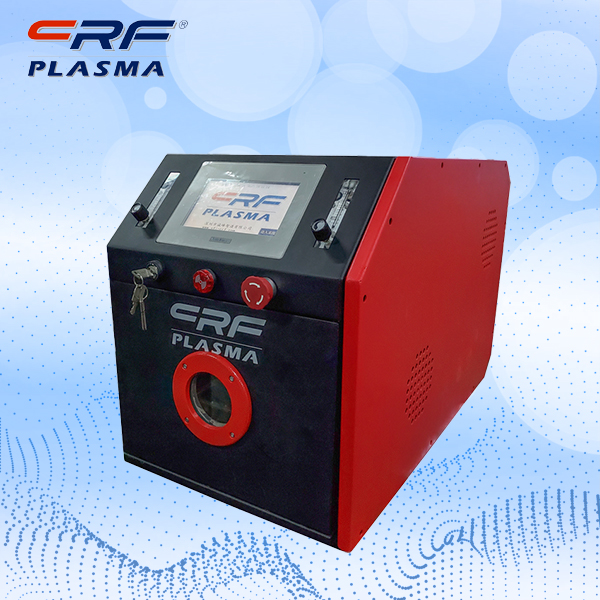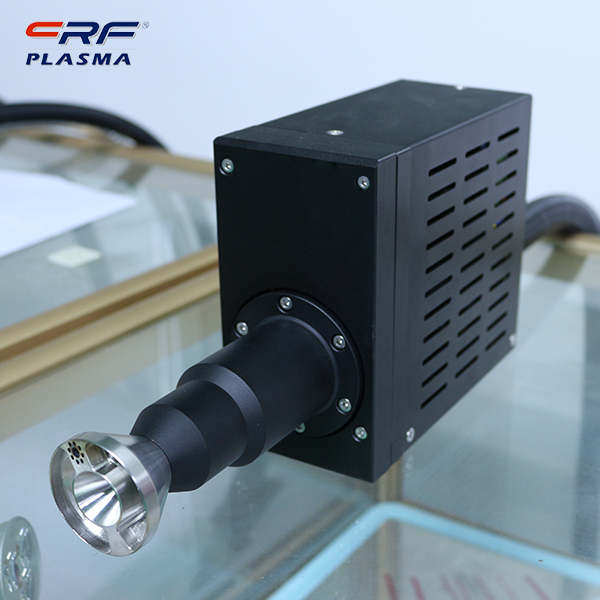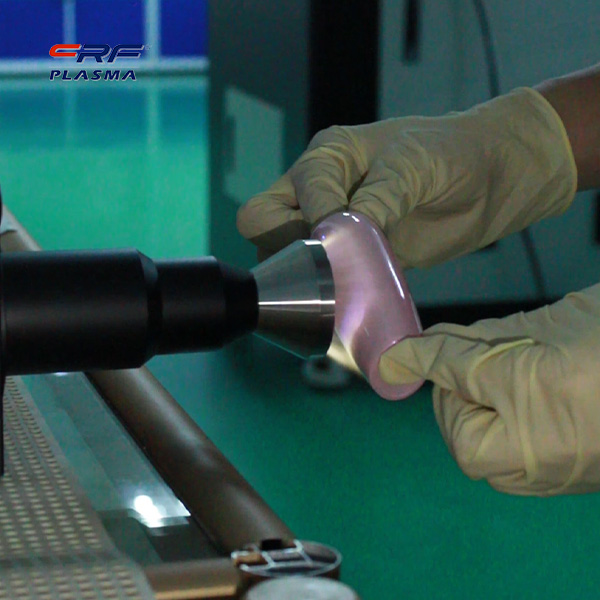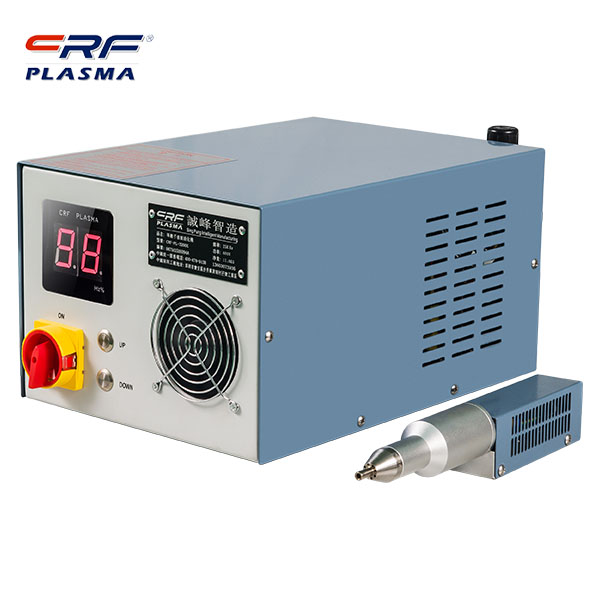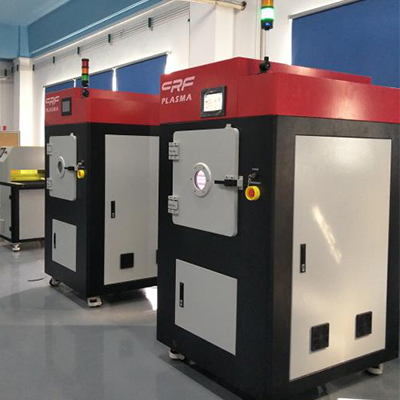
Welcome to Shenzhen Sing Fung Intelligent Manufacturing Co., Ltd.
E-mail:shaobo@sfi-crf.com
Plasma-formed high-pressure shock wave technology is used in titanium and aluminum alloys in the aerospace industry
- Categories:Company Dynamics
- Author:Plasma cleaning machine-CRF plasma plasma equipment-plasma surface treatment machine manufacturer-chengfeng intelligent manufacturing
- Origin:
- Time of issue:2022-01-31
- Views:
(Summary description)Plasma-formed high-pressure shock wave technology is used in titanium and aluminum alloys in the aerospace industry: Shock strengthening (LSP), also known as shot peening, is a new type of surface strengthening technology that uses high power density and short pulses to irradiate the surface of materials. A surface absorbing layer (coating layer) on the surface of a material. Explosive vaporization occurs by absorbing energy, and the vaporization produces high-pressure plasma. When the plasma is bound by the confinement layer and explodes, a high-pressure shock wave acts on the metal surface and propagates inside. When the dense and stable dislocation structure is formed on the surface of the material, the surface layer of the material is strain hardened, and a large compressive stress remains, which significantly improves the fatigue resistance and stress corrosion resistance of the material. The impact pressure model induced on the surface of the material, the nanometerization of the surface layer of the impact-induced material, and the impact-induced plasma strengthening technology are applied to the application of titanium alloys and aluminum alloys in the aviation industry. The surface of the polished target is usually coated with a layer of coating (also called sacrificial layer, usually organic black paint, tape or thin metal foils such as lead, zinc, and aluminum). A high peak power density, short pulsed beam is used to focus the beam through a focusing lens into a millimeter-scale spot and then irradiate it through a transparent confinement layer (usually water or glass) onto the coating surface. The coating fully absorbs high-energy energy, and explosive vaporization occurs in a very short time. The vapor continues to absorb energy to generate a high-pressure plasma layer. The latter's outward ejection is bound by the confinement layer to generate a high-pressure shock wave, which generates a strong stress wave that propagates from the surface of the target to the interior. When the pressure peak of the stress wave exceeds the elastic limit of the material for a certain period of time, a dense and stable dislocation structure will be formed on the surface of the material, and microscopic defects such as twins may also be generated, and the surface of the material will be strain hardened. The existence of residual compressive stress will change the stress field distribution on the surface of the structure and improve the fatigue strength of the material. Under the combined action of these two factors, the properties of the material such as fatigue resistance and stress corrosion resistance are significantly improved after plasma strengthening. The microstructure of the material directly affects the surface properties of the material. Grain size is one of the important factors affecting the structural properties of materials. As the grain size of the material surface decreases, the strength, plasticity and wear resistance of the material also increase. Studies have shown that grain refinement and even nanometerization on the surface of materials can improve the ability of materials to resist fatigue, wear and corrosion. Plasma produces strong dislocations and grain refinement in the material, so that under certain conditions, it is possible to realize nanometerization of the surface of the material. Achieving grain refinement is beneficial to improve the surface properties of titanium alloys and thus improve the overall performance of the entire component. The high-pressure shock wave formed by the plasma is introduced into the workpiece to cause plastic deformation of the workpiece under the force effect of the shock wave. The beam is used as a loading tool, and the parameters such as pulse energy, spot size and pulse interval width are controllable. The relative motion trajectory of the impact head and the workpiece is controlled by the numerical control system, which can realize the local forming of the workpiece with a single impact and optimize the plasma parameters. The workpiece is impacted at multiple points and multiple times, so as to realize the flexible stamping and forming of the workpiece.
Plasma-formed high-pressure shock wave technology is used in titanium and aluminum alloys in the aerospace industry
(Summary description)Plasma-formed high-pressure shock wave technology is used in titanium and aluminum alloys in the aerospace industry:
Shock strengthening (LSP), also known as shot peening, is a new type of surface strengthening technology that uses high power density and short pulses to irradiate the surface of materials. A surface absorbing layer (coating layer) on the surface of a material. Explosive vaporization occurs by absorbing energy, and the vaporization produces high-pressure plasma. When the plasma is bound by the confinement layer and explodes, a high-pressure shock wave acts on the metal surface and propagates inside. When the dense and stable dislocation structure is formed on the surface of the material, the surface layer of the material is strain hardened, and a large compressive stress remains, which significantly improves the fatigue resistance and stress corrosion resistance of the material.
The impact pressure model induced on the surface of the material, the nanometerization of the surface layer of the impact-induced material, and the impact-induced plasma strengthening technology are applied to the application of titanium alloys and aluminum alloys in the aviation industry. The surface of the polished target is usually coated with a layer of coating (also called sacrificial layer, usually organic black paint, tape or thin metal foils such as lead, zinc, and aluminum). A high peak power density, short pulsed beam is used to focus the beam through a focusing lens into a millimeter-scale spot and then irradiate it through a transparent confinement layer (usually water or glass) onto the coating surface. The coating fully absorbs high-energy energy, and explosive vaporization occurs in a very short time. The vapor continues to absorb energy to generate a high-pressure plasma layer. The latter's outward ejection is bound by the confinement layer to generate a high-pressure shock wave, which generates a strong stress wave that propagates from the surface of the target to the interior.
When the pressure peak of the stress wave exceeds the elastic limit of the material for a certain period of time, a dense and stable dislocation structure will be formed on the surface of the material, and microscopic defects such as twins may also be generated, and the surface of the material will be strain hardened. The existence of residual compressive stress will change the stress field distribution on the surface of the structure and improve the fatigue strength of the material. Under the combined action of these two factors, the properties of the material such as fatigue resistance and stress corrosion resistance are significantly improved after plasma strengthening.
The microstructure of the material directly affects the surface properties of the material. Grain size is one of the important factors affecting the structural properties of materials. As the grain size of the material surface decreases, the strength, plasticity and wear resistance of the material also increase. Studies have shown that grain refinement and even nanometerization on the surface of materials can improve the ability of materials to resist fatigue, wear and corrosion. Plasma produces strong dislocations and grain refinement in the material, so that under certain conditions, it is possible to realize nanometerization of the surface of the material. Achieving grain refinement is beneficial to improve the surface properties of titanium alloys and thus improve the overall performance of the entire component.
The high-pressure shock wave formed by the plasma is introduced into the workpiece to cause plastic deformation of the workpiece under the force effect of the shock wave. The beam is used as a loading tool, and the parameters such as pulse energy, spot size and pulse interval width are controllable. The relative motion trajectory of the impact head and the workpiece is controlled by the numerical control system, which can realize the local forming of the workpiece with a single impact and optimize the plasma parameters. The workpiece is impacted at multiple points and multiple times, so as to realize the flexible stamping and forming of the workpiece.
- Categories:Company Dynamics
- Author:Plasma cleaning machine-CRF plasma plasma equipment-plasma surface treatment machine manufacturer-chengfeng intelligent manufacturing
- Origin:
- Time of issue:2022-01-31 15:24
- Views:
Plasma-formed high-pressure shock wave technology is used in titanium and aluminum alloys in the aerospace industry:
Shock strengthening (LSP), also known as shot peening, is a new type of surface strengthening technology that uses high power density and short pulses to irradiate the surface of materials. A surface absorbing layer (coating layer) on the surface of a material. Explosive vaporization occurs by absorbing energy, and the vaporization produces high-pressure plasma. When the plasma is bound by the confinement layer and explodes, a high-pressure shock wave acts on the metal surface and propagates inside. When the dense and stable dislocation structure is formed on the surface of the material, the surface layer of the material is strain hardened, and a large compressive stress remains, which significantly improves the fatigue resistance and stress corrosion resistance of the material.
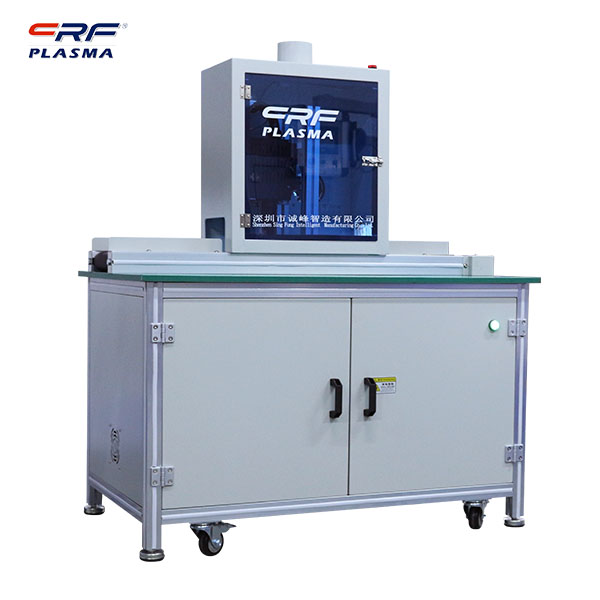 The impact pressure model induced on the surface of the material, the nanometerization of the surface layer of the impact-induced material, and the impact-induced plasma strengthening technology are applied to the application of titanium alloys and aluminum alloys in the aviation industry. The surface of the polished target is usually coated with a layer of coating (also called sacrificial layer, usually organic black paint, tape or thin metal foils such as lead, zinc, and aluminum). A high peak power density, short pulsed beam is used to focus the beam through a focusing lens into a millimeter-scale spot and then irradiate it through a transparent confinement layer (usually water or glass) onto the coating surface. The coating fully absorbs high-energy energy, and explosive vaporization occurs in a very short time. The vapor continues to absorb energy to generate a high-pressure plasma layer. The latter's outward ejection is bound by the confinement layer to generate a high-pressure shock wave, which generates a strong stress wave that propagates from the surface of the target to the interior.
The impact pressure model induced on the surface of the material, the nanometerization of the surface layer of the impact-induced material, and the impact-induced plasma strengthening technology are applied to the application of titanium alloys and aluminum alloys in the aviation industry. The surface of the polished target is usually coated with a layer of coating (also called sacrificial layer, usually organic black paint, tape or thin metal foils such as lead, zinc, and aluminum). A high peak power density, short pulsed beam is used to focus the beam through a focusing lens into a millimeter-scale spot and then irradiate it through a transparent confinement layer (usually water or glass) onto the coating surface. The coating fully absorbs high-energy energy, and explosive vaporization occurs in a very short time. The vapor continues to absorb energy to generate a high-pressure plasma layer. The latter's outward ejection is bound by the confinement layer to generate a high-pressure shock wave, which generates a strong stress wave that propagates from the surface of the target to the interior.
When the pressure peak of the stress wave exceeds the elastic limit of the material for a certain period of time, a dense and stable dislocation structure will be formed on the surface of the material, and microscopic defects such as twins may also be generated, and the surface of the material will be strain hardened. The existence of residual compressive stress will change the stress field distribution on the surface of the structure and improve the fatigue strength of the material. Under the combined action of these two factors, the properties of the material such as fatigue resistance and stress corrosion resistance are significantly improved after plasma strengthening.
The microstructure of the material directly affects the surface properties of the material. Grain size is one of the important factors affecting the structural properties of materials. As the grain size of the material surface decreases, the strength, plasticity and wear resistance of the material also increase. Studies have shown that grain refinement and even nanometerization on the surface of materials can improve the ability of materials to resist fatigue, wear and corrosion. Plasma produces strong dislocations and grain refinement in the material, so that under certain conditions, it is possible to realize nanometerization of the surface of the material. Achieving grain refinement is beneficial to improve the surface properties of titanium alloys and thus improve the overall performance of the entire component.
The high-pressure shock wave formed by the plasma is introduced into the workpiece to cause plastic deformation of the workpiece under the force effect of the shock wave. The beam is used as a loading tool, and the parameters such as pulse energy, spot size and pulse interval width are controllable. The relative motion trajectory of the impact head and the workpiece is controlled by the numerical control system, which can realize the local forming of the workpiece with a single impact and optimize the plasma parameters. The workpiece is impacted at multiple points and multiple times, so as to realize the flexible stamping and forming of the workpiece.
Scan the QR code to read on your phone

TEL:0755-3367 3020 / 0755-3367 3019

E-mail:sales-sfi@sfi-crf.com

ADD:Mabao Industrial Zone, Huangpu, Baoan District, Shenzhen




